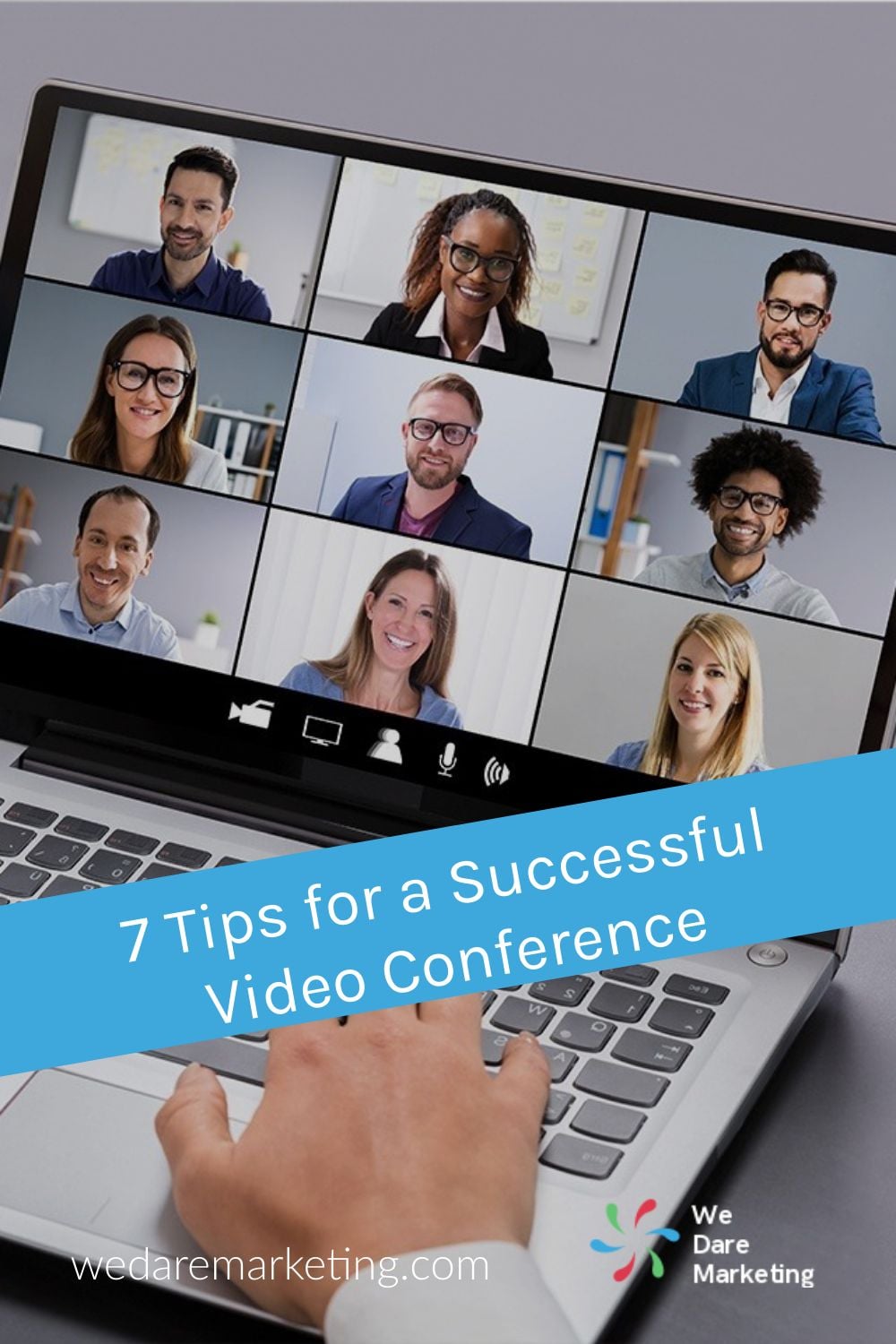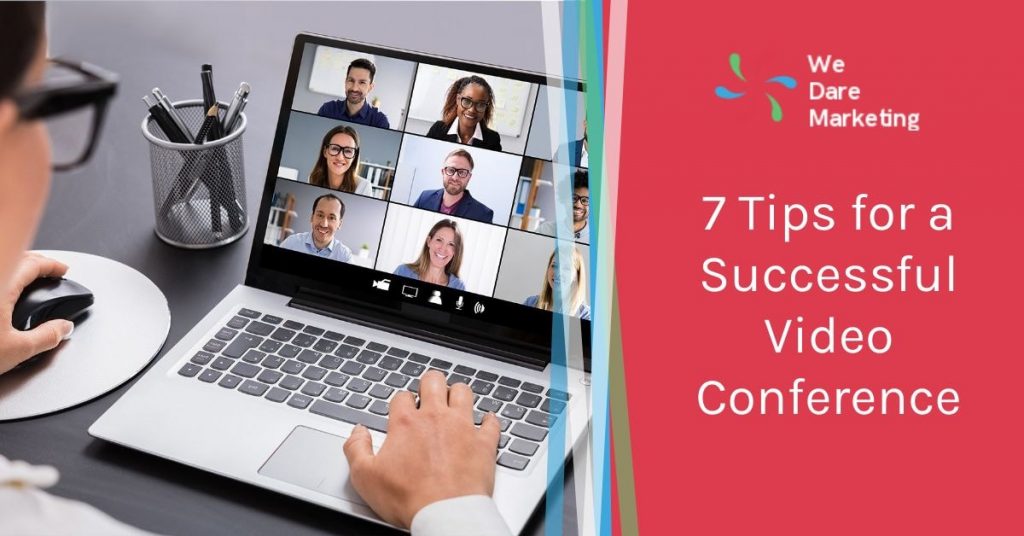You might have hear that “you’re muted” is the most commonly used phrase in the last year. But there’s more to a successful video conference than remembering to unmute yourself. And no, it’s not remembering to mute yourself either! Let’s take a look at 7 quick yet impactful tips for a successful video conference.

If Working From Home
It might sound unnecessary to plan for a video conference right now. We have heard many people say “ If you’re coming to my house, you’ll see my house”. While this is a relevant argument that mostly stems from frustration due to working from home (for some of us), we highly advise against leaving things up to luck. Know exactly how long you’ll need for the meeting and let everyone at home know they need to keep things quiet for that period. Keeping distractions to a minimum will help you focus on your work. Like Picasso said, “Without great solitude no serious work is possible”.
Curate Your Background
Another thing to prepare before a video meeting is your background. Contrary to popular belief virtual backgrounds are not the best way to melt the ice and start conversations in a video conference. In reality, the inorganic look of virtual backgrounds distract the participants and they seldom spark meaningful conversations.
While there is no one way to do this, most effective backgrounds have 3 things in common: one object representing your interests, one object representing your work and one object representing your personality.
Giving visual cues to participants will not only stimulate their minds to think about what your items are representing, but will also encourage them to engage in conversations surrounding these representations.
Test Your Devices
Now most people don’t know this, but you can wear headphones to a video conference. Joking aside, testing the devices you use for audio and video quality before a meeting can save you from the humiliation of being called out during a meeting for causing audio feedback. Some devices will have noise cancelling while some won’t. That’s why it’s important to test each device and know when to use headphones. As a rule of thumb, you should always default to using headphones though.
Test Your Video Software
Another thing to look out for is the video software you’re using. Each software will have its own audio and video settings, so if you’re using one for the first time it’s always a good idea to test it out before. Depending on your role in the meeting, you should also take the time to get acquainted with the capabilities available in that software like how to share the entire screen vs a single tab from a browser. Last thing you want is for your email notifications to keep popping up during a presentation.
Plan Ahead
Out of all the problems we’ve faced, this is probably the trickiest to deal with. Sometimes meetings run longer than they should and your entire schedule gets shifted or worse, you are late to an important meeting. The best way to deal with this is to plan ahead of time and set reminders for when the meeting is supposed to end.
Video conferencing tools like Zoom, GoToMeeting, Google Workspace or 11Sight have built in tools that show a countdown timer for every half hour, so you don’t lose track of time. However, if you don’t have access to a built-in tool like this you can always use a timer on your phone or watch to show you when your meeting is supposed to end. This gives you the ability to start wrapping things up 5-10 minutes before the end and schedule another time to meet if you have more things to work on. This is a powerful tool that helps you deal with uncertainty.
Still Late to Your Next Meeting?
In case you still end up being late to your next meeting, you should always have a plan for what you will do if that were to happen.
Try this: have an informative email template handy (by the way, Get Response offers a variety of email template that can be set up in minutes) .
Before each meeting compose a new email to the attendees of your next meeting and paste the email template. When you know you won’t be able to make it on time to your next meeting, simply write down how long it will take you to get there and hit send. This way you can focus on finishing up your current meeting and save the apologies for later.
Assign Roles
Be it at school, at work or at court, role assignment is critical to the effectiveness of any virtual meeting. It gives each participant a common understanding of how the meeting will be structured, how long each party will speak for and how the order will be preserved.
Every meeting must have a moderator that holds an invisible microphone. The moderator follows the meeting agenda and passes on the invisible microphone to the person that needs to speak. Now this is how things usually go, but we advise to limit the time for this monotonous passing of the microphone.
Best way to ensure a meeting is effective is to engage all the participants in a discussion every now and then so they too have a stake in the conversation and thus pay attention to what is being said.
Conclusion – Video Conference Tips in 2022
Now that most office workers work from home, it is always helpful to read video conference tips. This will make your online experience more rewarding and efficient.

